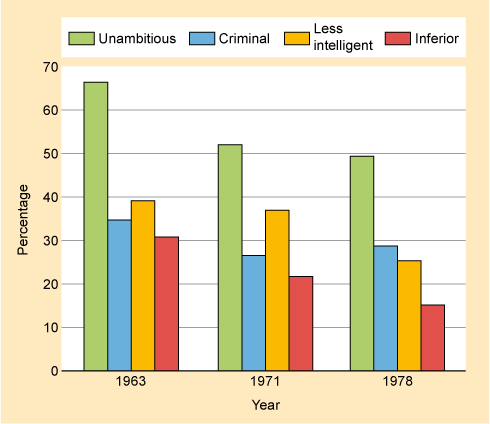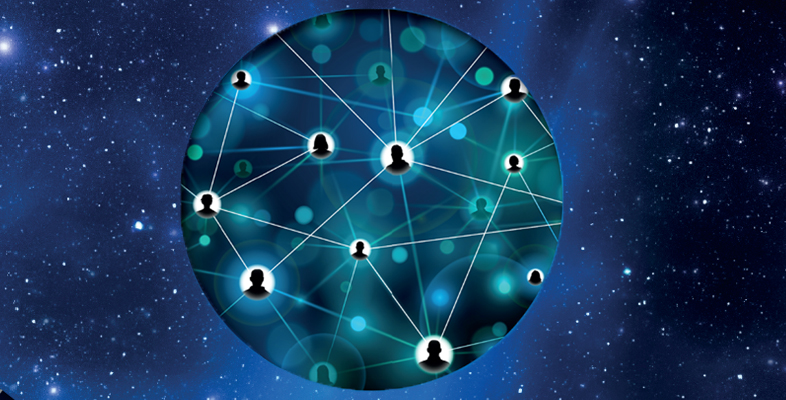1.1 Explicit and implicit prejudice
Some research evidence suggests that levels of racial prejudice are changing in modern, Western societies. Consider, for example, Figure 1 below, which presents evidence on white Americans’ levels of agreement with negative stereotypes about black Americans at three points in time. What does this figure show? What kind of historical changes does it convey?

This figure can be interpreted in a number of ways. First, it shows that white Americans agree with some racial stereotypes (e.g. that black Americans are ‘unambitious’) more than others (e.g. that black Americans are ‘less intelligent’). It also shows that stereotyping has decreased over time across all four stereotype measures. For example, in 1963 about 30 % of white Americans felt that black Americans were ‘inferior’, but by 1978 roughly half as many held this stereotype.
One interpretation of this evidence is that it proves that Americans are becoming more racially tolerant. The fact that a decline is evidenced on all of the stereotype scales in Figure 1 is grounds for optimism.
Many psychologists, however, are cautious about jumping to this conclusion. Among other reservations, they have highlighted the limitations of the self-report measures of prejudice used here, i.e. measures in which people are asked to report on their own negative beliefs about members of other groups.
Should they be cautious? What are the potential limitations of this kind of measure of prejudice?
